Thermo 30 Click
R425.00 ex. VAT
Thermo 30 Click is a compact add-on board that accurately measures temperature. This board features the STS32-DIS-10KS, a third-generation, high-reliability, certified digital temperature sensor from Sensirion. It is a digitally calibrated and ISO17025-certified temperature sensor with an operating temperature range of -40 to 125°C. The temperature sensor relies on industry-proven CMOSens® technology, which enables better computational power, reliability, and accuracy specifications in comparison to its predecessors. This Click board™ makes the perfect solution for the development of the thermal management of portable electronics and industrial, consumer, and environmental applications.
Thermo 30 Click is fully compatible with the mikroBUS™ socket and can be used on any host system supporting the mikroBUS™ standard. It comes with the mikroSDK open-source libraries, offering unparalleled flexibility for evaluation and customization. What sets this Click board™ apart is the groundbreaking ClickID feature, enabling your host system to seamlessly and automatically detect and identify this add-on board.
Stock: Lead-time applicable.
| 5+ | R403.75 |
| 10+ | R382.50 |
| 15+ | R361.25 |
| 20+ | R347.65 |

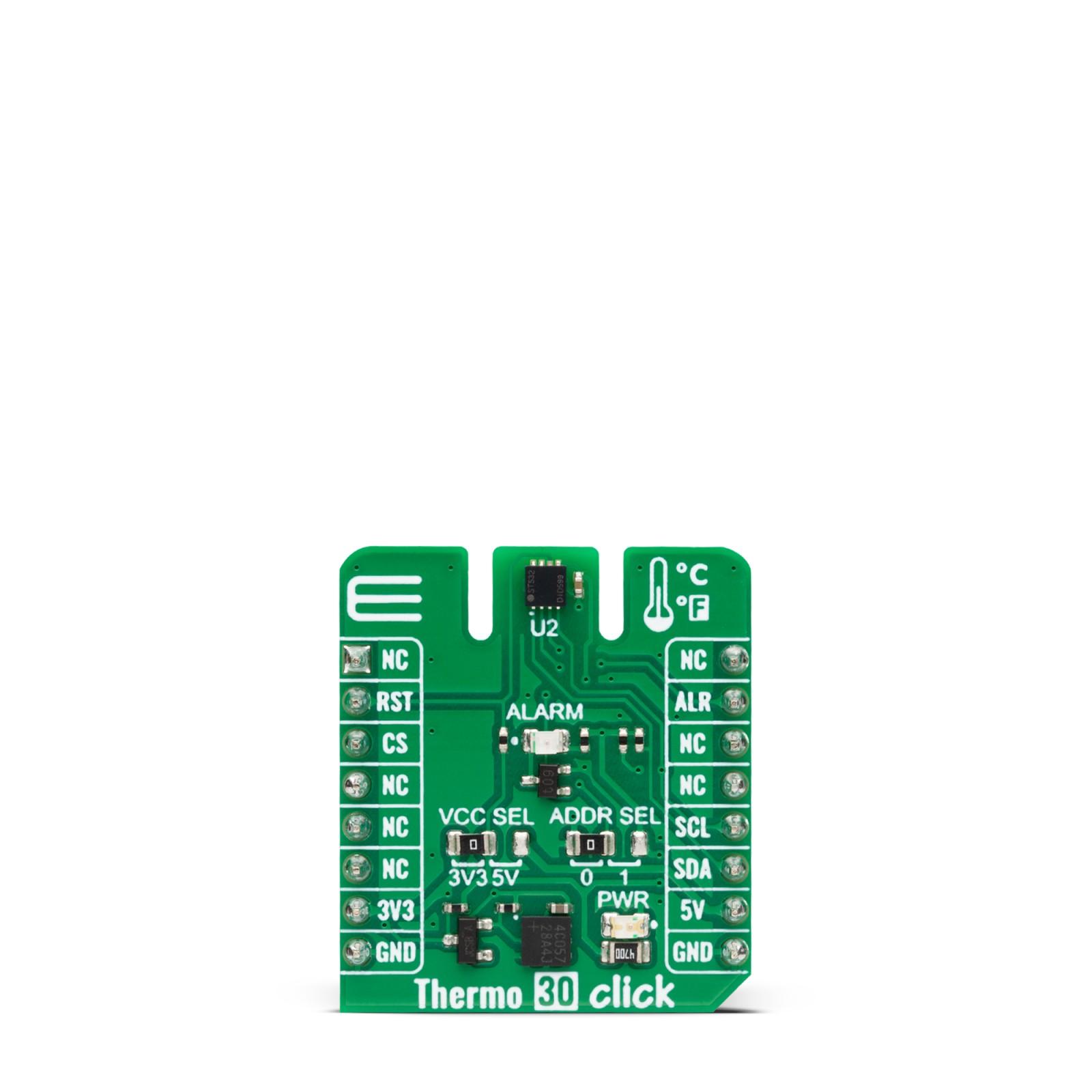
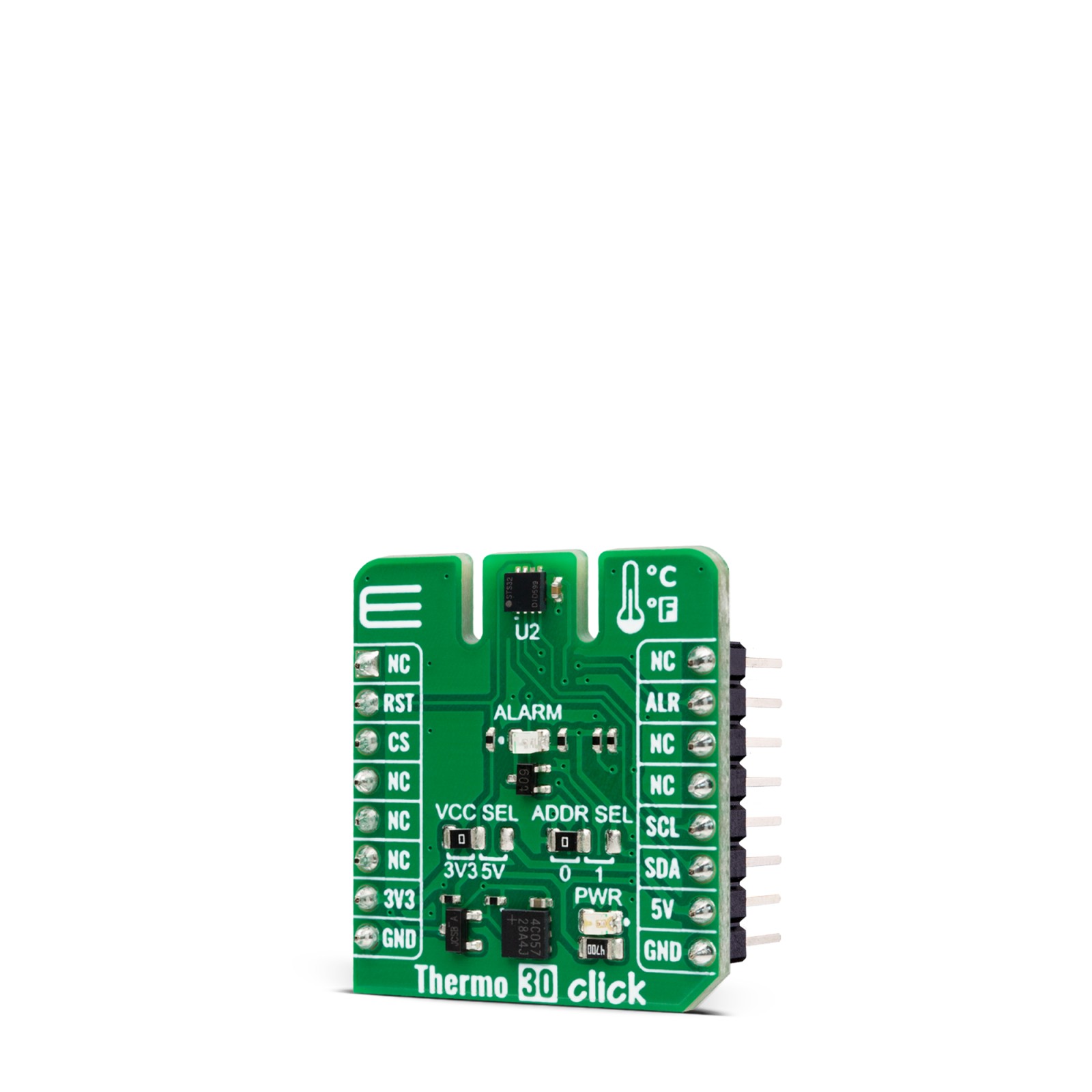

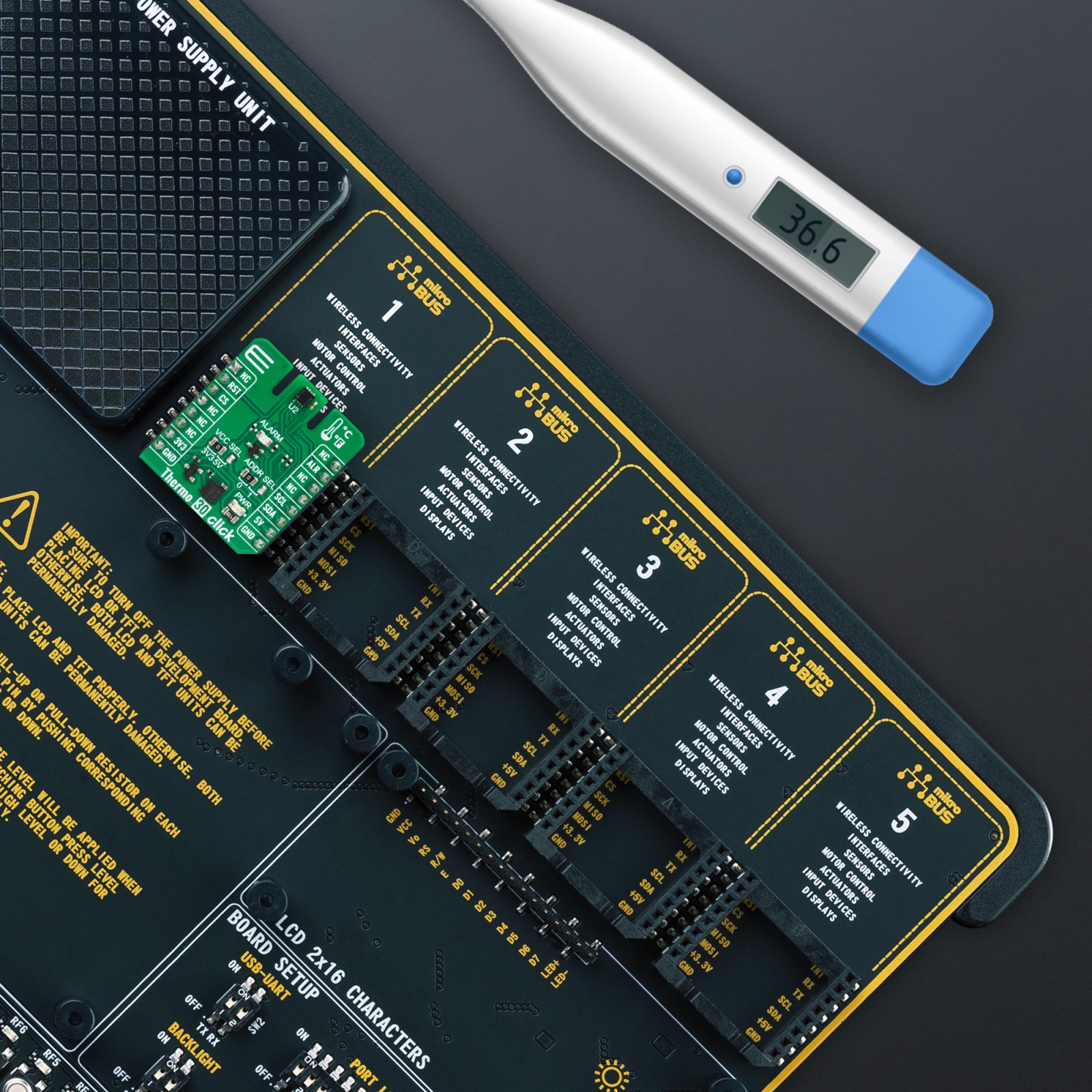
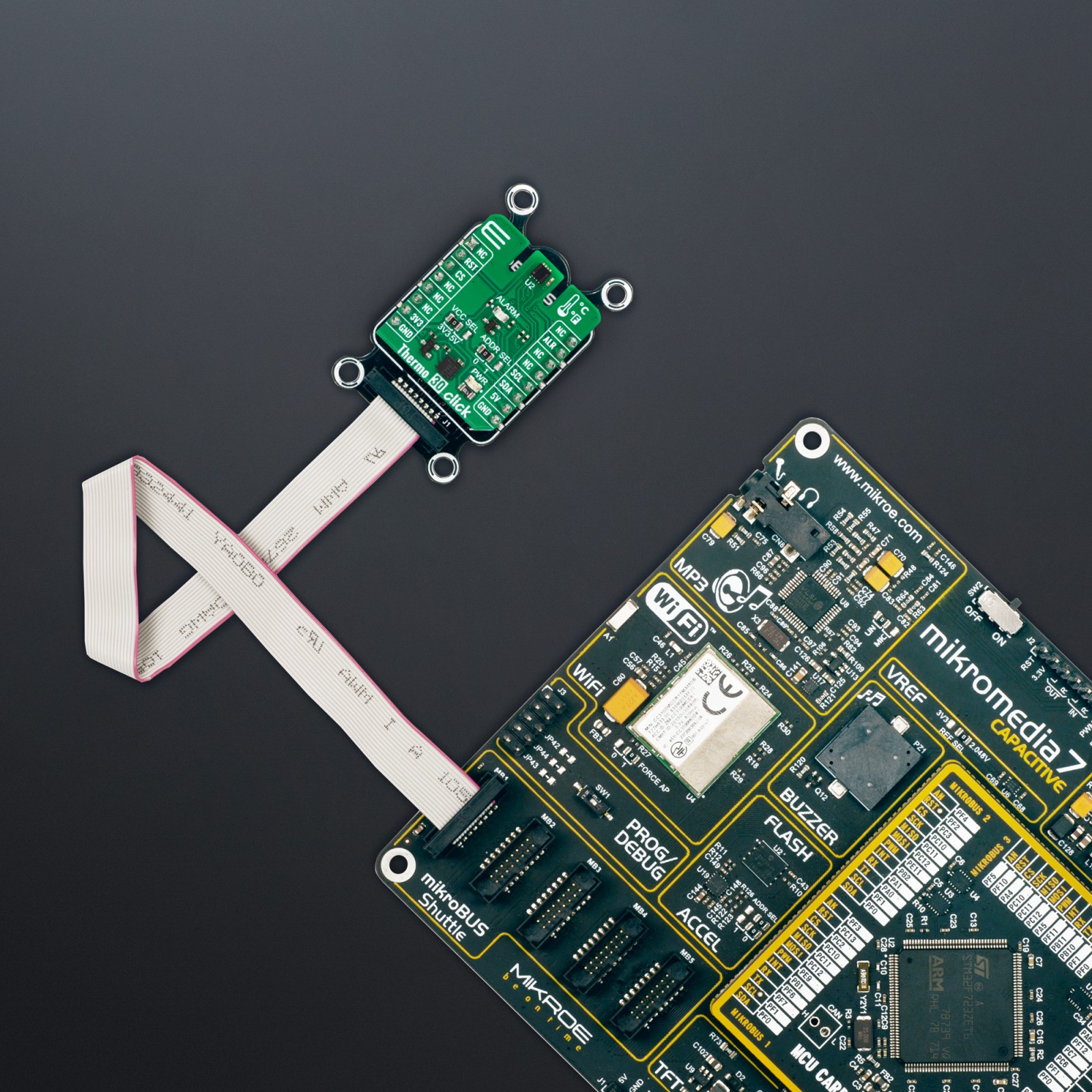
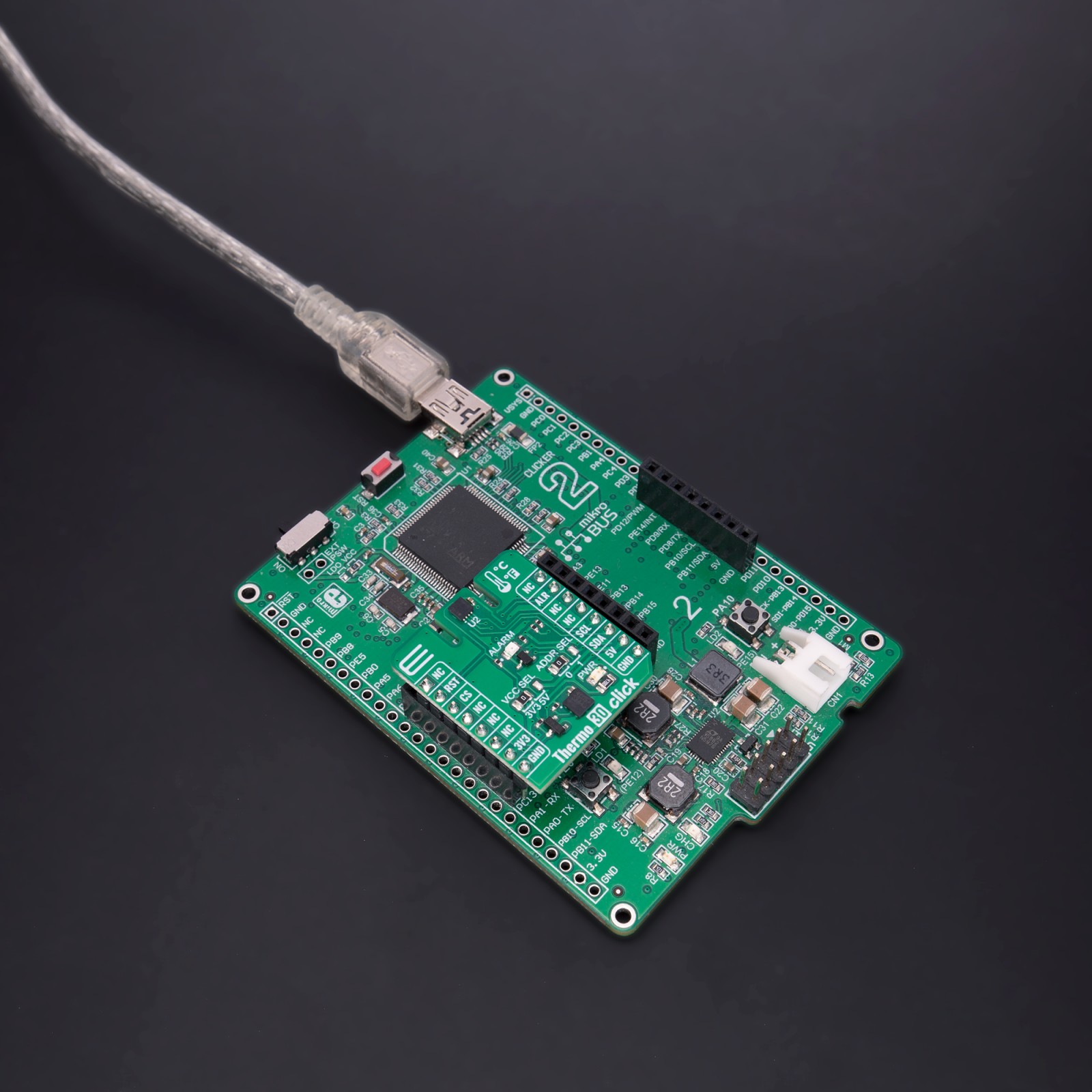
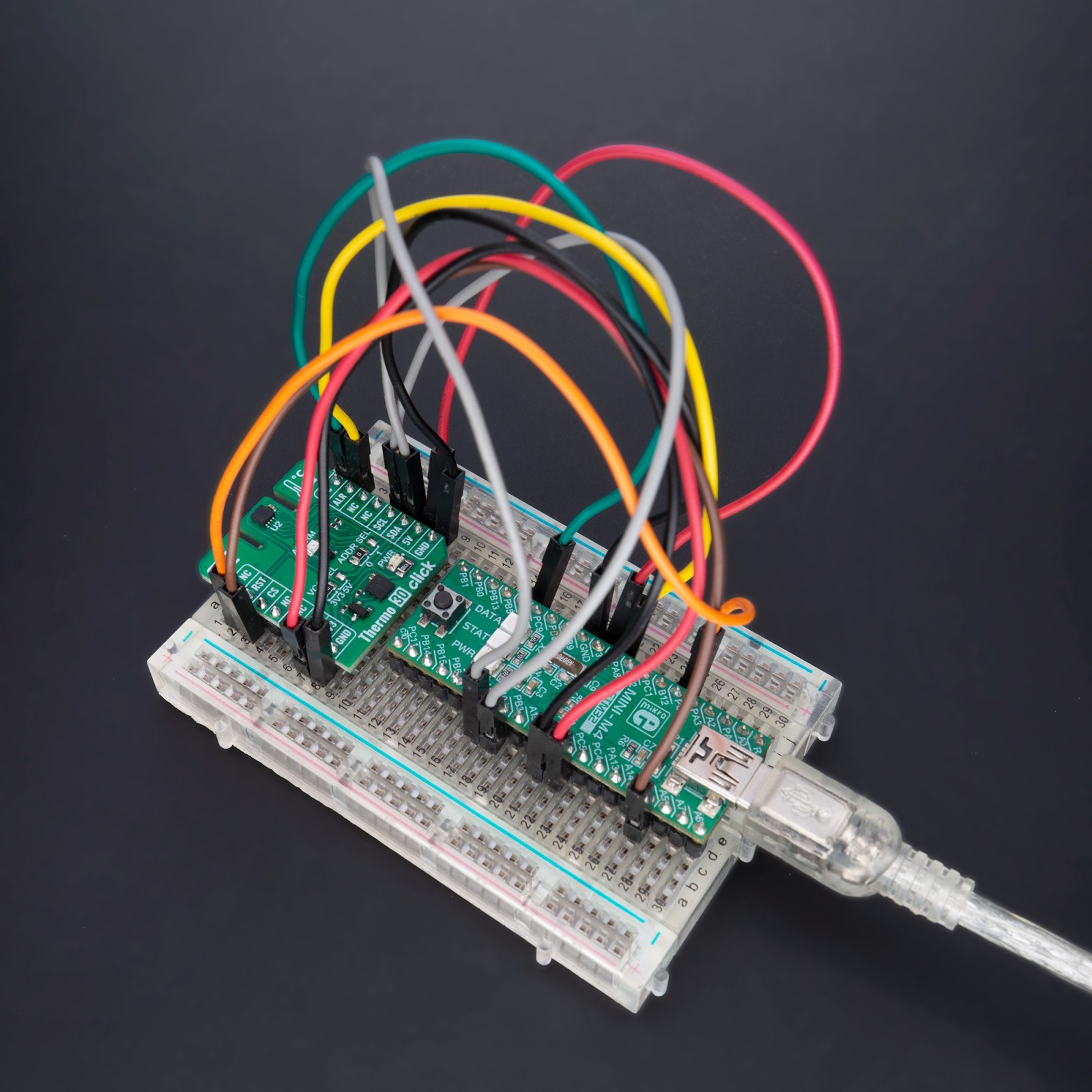
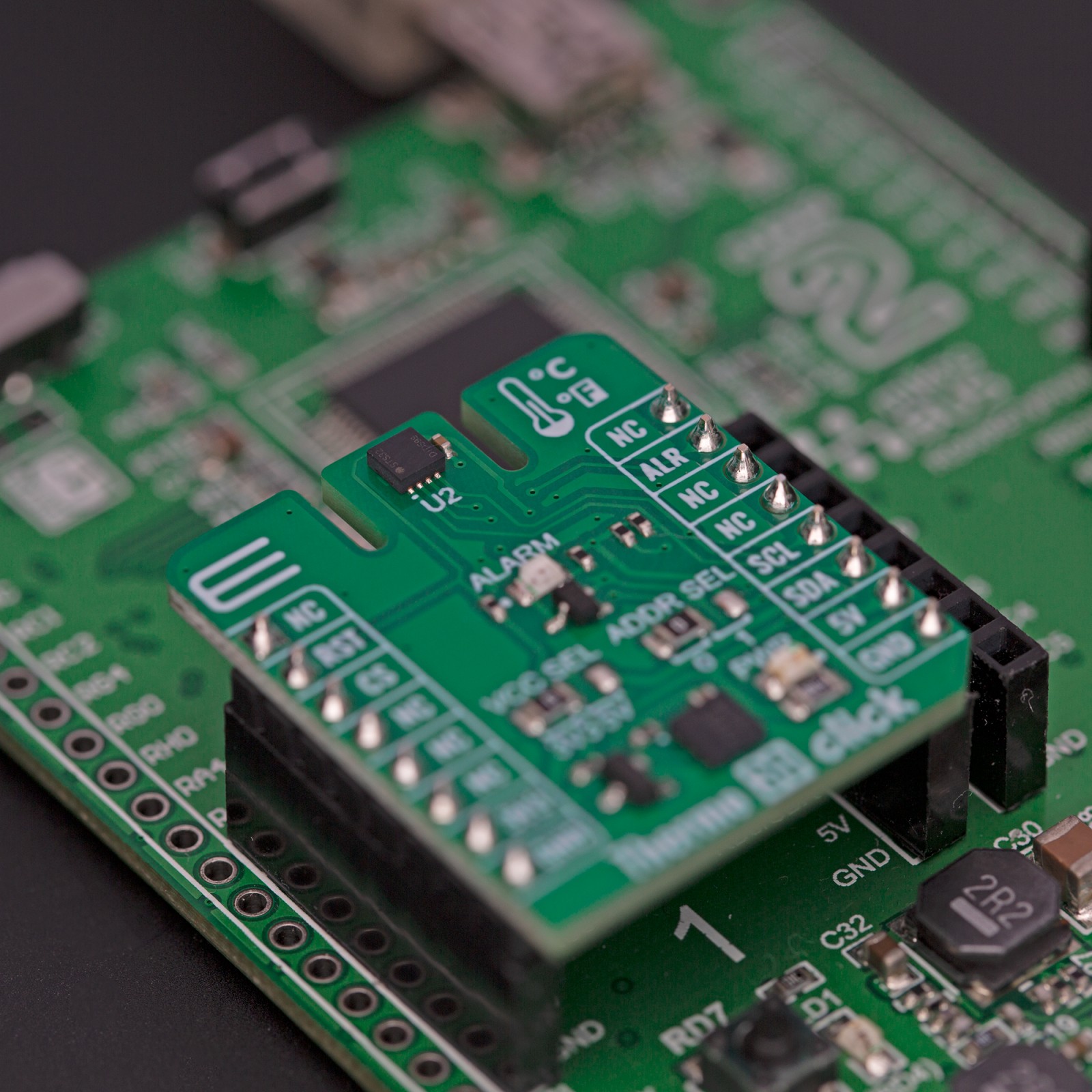
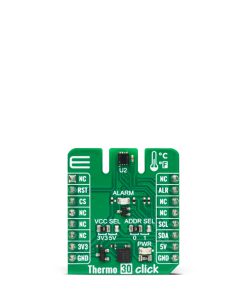
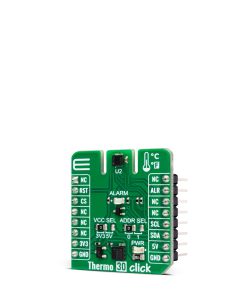
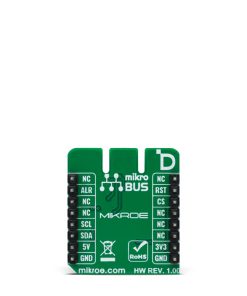
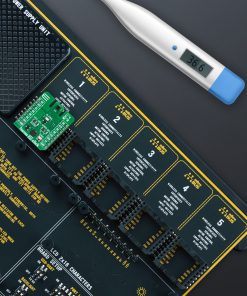


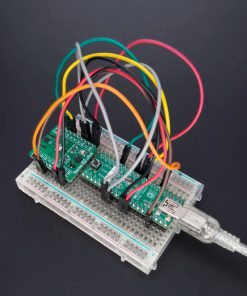
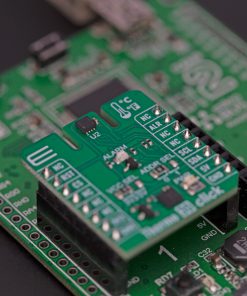
.jpg)








